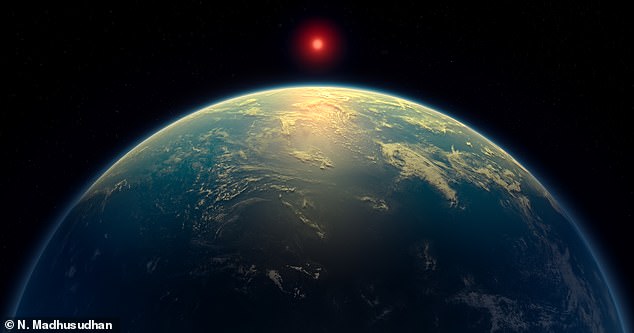
Scientists Detect Microbial Biosignature on Distant Ocean Planet 120 Light-Years from Earth
Distant Ocean World May Harbor Life in Historic Discovery
(Approx. 600 words)
Scientists using the James Webb Space Telescope (JWST) have detected tantalizing chemical signatures on exoplanet K2-18b, located 124 light-years away, that could indicate the presence of life. The discovery of dimethyl sulfide (DMS) and dimethyl disulfide (DMDS)—molecules predominantly produced by living organisms on Earth—marks the "strongest hint yet" of biological activity beyond our solar system.
A Hycean World with Earth-Like Conditions
K2-18b, orbiting a red dwarf star in the habitable zone, is a "Hycean" world: 2.6 times larger and 8.6 times more massive than Earth, likely covered in vast oceans. Its year lasts just 33 days due to its proximity to the star, but temperatures are comparable to Earth’s. Earlier JWST observations revealed methane and carbon dioxide, but the new data highlights DMS and DMDS at concentrations thousands of times higher than on Earth.

An artist’s depiction of K2-18b, a potential Hycean world with oceans and a hydrogen-rich atmosphere.
Biosignatures or Unknown Chemistry?
On Earth, DMS is emitted by marine phytoplankton. While the findings align with predictions for Hycean worlds, researchers caution that non-biological processes could explain the chemicals. "This is the scenario that best fits the data, but we need more observations," said lead astronomer Prof. Nikku Madhusudhan of the University of Cambridge. The team’s results, published in The Astrophysical Journal Letters, currently hold a "three-sigma" confidence level (0.3% chance of error), short of the gold-standard "five-sigma" (0.00006% error).

Marine phytoplankton on Earth produce DMS—a key biosignature detected on K2-18b.
Next Steps for Confirmation
JWST’s Mid-Infrared Instrument (MIRI) captured the signals, building on prior data from its near-infrared tools. Further observations over 16–24 hours could confirm the findings. "This might be the tipping point in answering whether we’re alone in the universe," Madhusudhan remarked.
How JWST Spotted the Clues
Astronomers analyzed starlight filtering through K2-18b’s atmosphere during planetary transits. Absorption patterns revealed atmospheric composition, with DMS/DMDS emerging alongside methane and CO₂.

The James Webb Space Telescope’s advanced instruments enabled the breakthrough discovery.
K2-18b: Key Facts
- Discovered: 2015
- Star: Red dwarf K2-18
- Mass: 8.6 Earth masses
- Orbital Period: 33 days
- Distance: 124 light-years
While optimism is high, Madhusudhan stresses caution: "We must rule out unknown chemical pathways." If confirmed, K2-18b could revolutionize our understanding of life’s potential in the cosmos.

An artist’s vision of K2-18b’s possible ocean-covered surface, potentially teeming with life.
This discovery underscores JWST’s unparalleled ability to probe distant worlds, bringing humanity closer than ever to resolving the age-old question: Are we alone?


